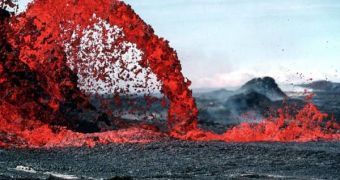Studying the temperature and heat conductivity patterns that exist under the Earth's crust, some 30 to 40 kilometers beneath our feet, is not an easy task, mostly because of the way rocks influence each other when subjected to high temperatures. Heat is transmitted from one to the other not only through contact, by vibrations, but also through radiation, as in via light. Understanding how heat flows through the rocks is paramount in the effort to generate computer models that accurately predict the movements of our planet's crust in the future.
Until now, however, geologists investigating these temperatures have found it very difficult to precisely assess them, mostly because of the reading flaws that their instruments suffer from being exposed to both vibrations and radiation. Therefore, they assumed that the heat was distributed evenly throughout the crust, and moved on with the computational models. Now, an expert from the Washington University in St. Louis (WUSTL) has managed to find a way to measure those temperatures that actually seems to work.
WUSTL research professor of earth and planetary sciences Anne M. Hofmeister, PhD, began to use industrial-sized lasers at her facility at the University, in a process for which these types of machines were never before used. During experiments, rock samples are heated and then the pulse laser is aimed at them. The experts then measure how long it takes for the temperature waves to move from one side of the stone to the other and how the heating process unfolds.
“Our analysis shows that rocks are more efficient at conducting heat at low temperatures than was previously thought and less efficient at high temperatures. The process of moving heat around really depends on the temperature of the rocks,” she explains. Details of the expert's work are published in the March 19th issue of the scientific journal Nature.
“The new methods change our understanding of how heat is transported in geological environments. This pertains to where you find magmas, where you cook metamorphic rock, and where lavas form on ocean ridges. Once you get rocks melting, the thermal diffusivity goes down, which makes it harder to cool the rocks. They stay hot longer and there's the potential for more melting. The goal for most of my career has been to determine the temperature inside the earth. It's the time dependence, how long it takes heat to flow through rocks, that is going to tell us how hot the interior is,” she concludes.

 14 DAY TRIAL //
14 DAY TRIAL //